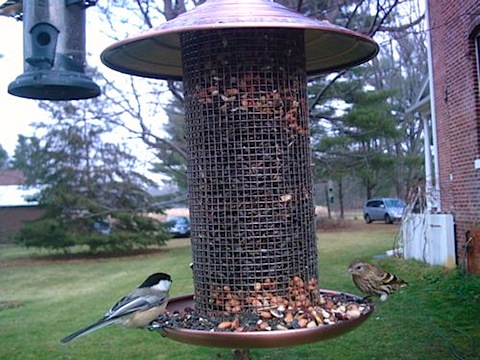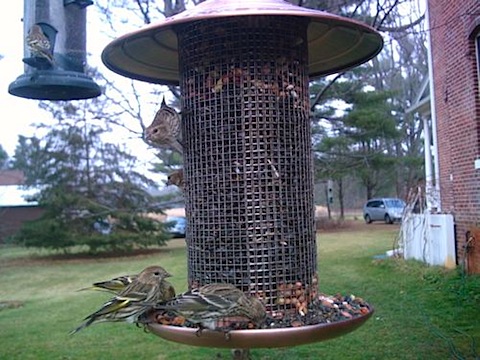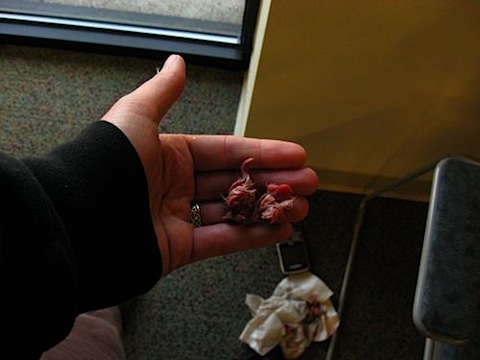Now let's talk about some of the more challenging ducks on our aerial waterfowl surveys! Are you ready for some hardcore duck id fun! Sure you are!
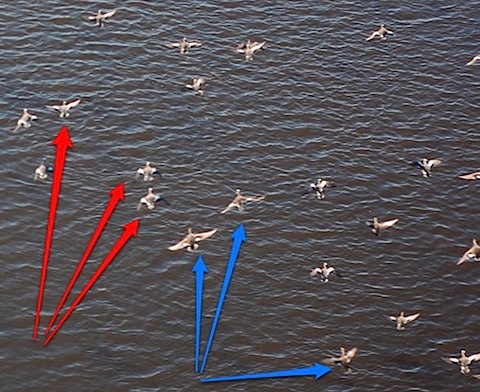
I placed this photo in my last blog entry about aerial waterfowl identification and asked if anyone could identify them and somebody did! Believe it or not, these are some of the easier birds to id. Above we have American wigeon and gadwall. The birds with the red arrow are the wigeon. If you look at their wings, you see a dark patch and a white patch right above it. The other birds are gadwall, which have just the small white patch and that dark spot on their tails. I've bee surprised at the amount of gadwall I've seen on our surveys and I suspect that when I have seen ducks fly in these area and I've been watching from the ground, I assumed mallard. Now, I'm going to have to give them a second look. I always feel a sense of relief when I see the white patch of the gadwall or the black and white patch of the wigeon. I know what I'm looking at.
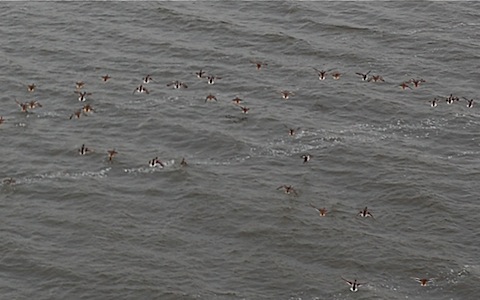
Here are mallards in flight for comparison. They do not have the small square white patch that you see on the gadwall. It's still tough, but since mallards are the more common ducks you see, you get the hang of them fairly quickly, then you just have to figure out how many you see. How many do you think you see in the above photo? Now count them and see how close you got.
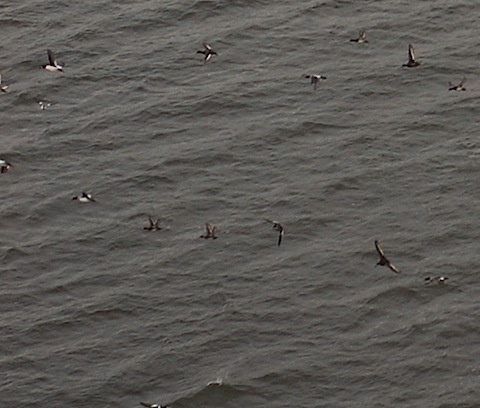
Now here is a fun group! This photo was taken on Lake Pepin on a cloudy day. I prefer going out on cloudy day. When the sun is out, especially when it's low, the glare can make identification really tough. But cloudy days, you can focus on the patterns of white on the ducks and you're good to go. Can you pick out any ducks before going below? One of them was a surprise for me.
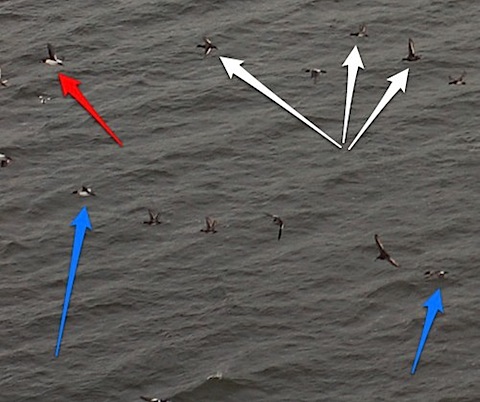
I know, you're looking at these arrows and you're freaking out, but let's take it one at a time.
If you haven't noticed already, take a good look at the bird with the red arrow, especially the face. Can you make out a white spot? That is a goldeneye. Believe it or not, that tiny white patch is very identifiable from the plane. When we first started, I was focusing on wing pattern and had a tough time telling them from the common mergansers, but the pilot told me to watch the face when a saw the black and white wing pattern. If it's a goldeneye, you will easily see that white patch. So, the red arrow is the common goldeneye.
Now, the blue arrow is pointing to common mergansers. The merganser on the left is male, the one on the right is female. The male merganser and the goldeneye look similar, but you cannot see the white cheek patch. These birds also have a tendency to fly low, right over the water when our plane passes over, they form a long line right above the water which also helps give you a clue when you are approaching them from a great distance and aren't sure what birds you are about to approach.
Now the white arrows get interesting. On our surveys, we are only supposed to document scaup, we don't have to differentiate between greater scaup and lesser scaup which is great, it's hard enough on the ground, I can't imagine doing it 120 feet above them going 100 mph. It's presumed on Lake Pepin that they are all less scaup but it's not out of the realm of possibility for one or two greaters to be mixed in. Here are illustrations from David Sibley's Guide on greater scaup vs lesser scaup:

Notice how the white on the wing of the greater scaup extends longer on the wing than the lesser scaup. Now, if you go back up to the photo to the birds with the white arrows, those are scaup. But here's another enlargement of those scaup:
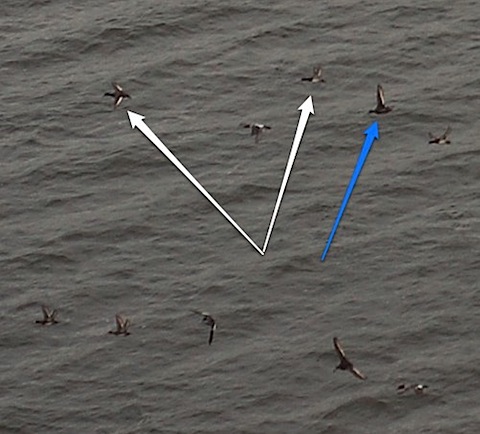
The birds with the white arrows are lesser scaup, the white doesn't go that far. But look at the bird with the blue arrow. It's darker, which makes it female, but the white appears to extend all the way to the end. Also, if you look at it compared to the closest lesser scaup, it appears bigger. Greaters are supposed to be bigger than greaters--could this be greater? For my survey, I only need to say, "scaup" but it does make me wonder how many greaters might be mixed in.

 Doing aerial waterfowl surveys is hard work. It's a lot like shorebird identification, you can't just rely on colors, it's more general size, shape and impression--that's right giss birding! I'm told that the hard part for many on these surveys is not getting motion sick in the plane. I can't imagine being motion sick and trying to id and count large amounts of birds literally on the fly. Ick. Fortunately, for me as long as I'm not chugging martinis the night before and if I keep some snacks handy, nausea avoids me. When I first learned that I would be doing these surveys, I was given six hand illustrations of ducks to study and I searched Google Images to find photos of ducks taken from aerial surveys to make flash cards...there aren't too many images like that out there. My hope is that someone who gets to do this in the future, finds this blog entry and has some chance of learning what to watch for the first time they go up. The truth is, nothing really trains you like having an experienced eye with you the first few times you fly to help you learn your birds.
Doing aerial waterfowl surveys is hard work. It's a lot like shorebird identification, you can't just rely on colors, it's more general size, shape and impression--that's right giss birding! I'm told that the hard part for many on these surveys is not getting motion sick in the plane. I can't imagine being motion sick and trying to id and count large amounts of birds literally on the fly. Ick. Fortunately, for me as long as I'm not chugging martinis the night before and if I keep some snacks handy, nausea avoids me. When I first learned that I would be doing these surveys, I was given six hand illustrations of ducks to study and I searched Google Images to find photos of ducks taken from aerial surveys to make flash cards...there aren't too many images like that out there. My hope is that someone who gets to do this in the future, finds this blog entry and has some chance of learning what to watch for the first time they go up. The truth is, nothing really trains you like having an experienced eye with you the first few times you fly to help you learn your birds.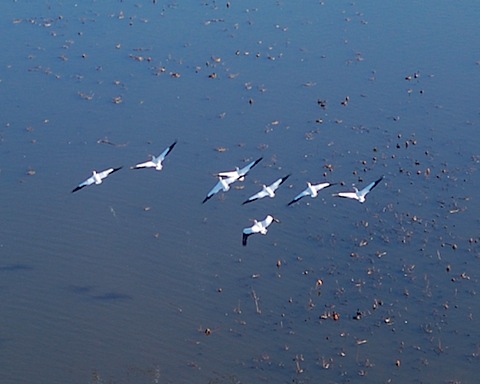
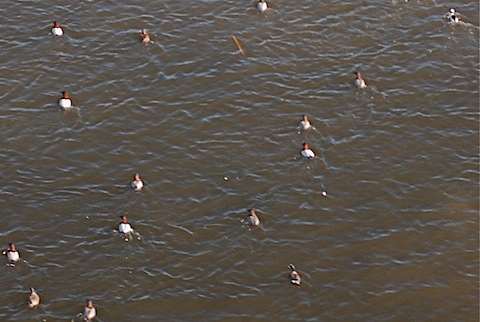

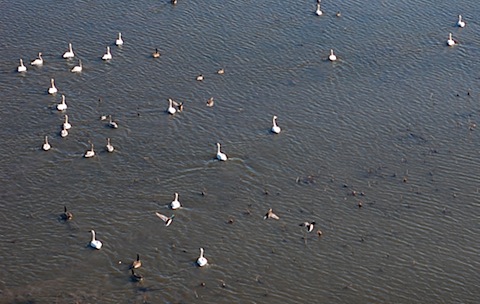
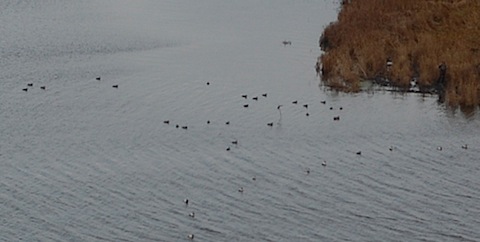
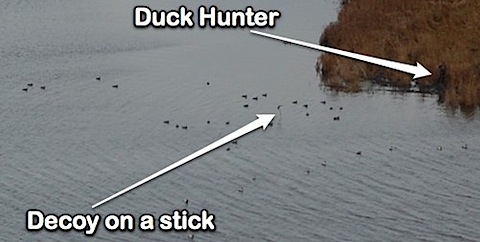

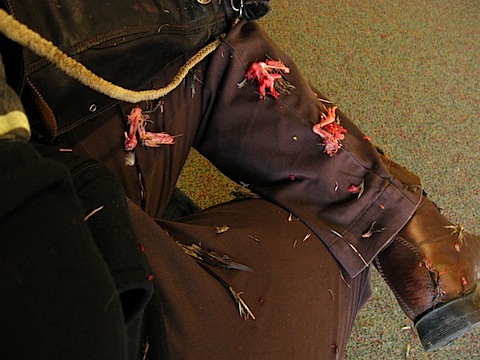

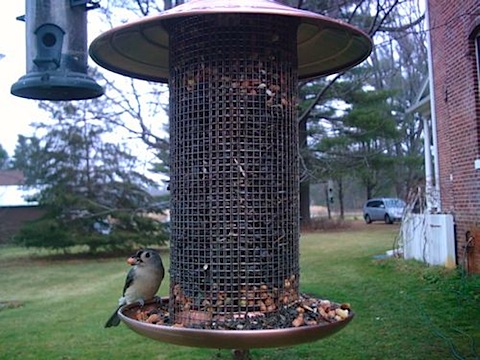 We had the Wingscapes Cam up at Mr. Neil's this weekend and I'm fairly certain I witnessed the arrival of pine siskins. I was out and about on Wednesday and I didn't see any. Just the usual suspects like the above tufted titmouse were using the feeders on Wednesday.
We had the Wingscapes Cam up at Mr. Neil's this weekend and I'm fairly certain I witnessed the arrival of pine siskins. I was out and about on Wednesday and I didn't see any. Just the usual suspects like the above tufted titmouse were using the feeders on Wednesday.